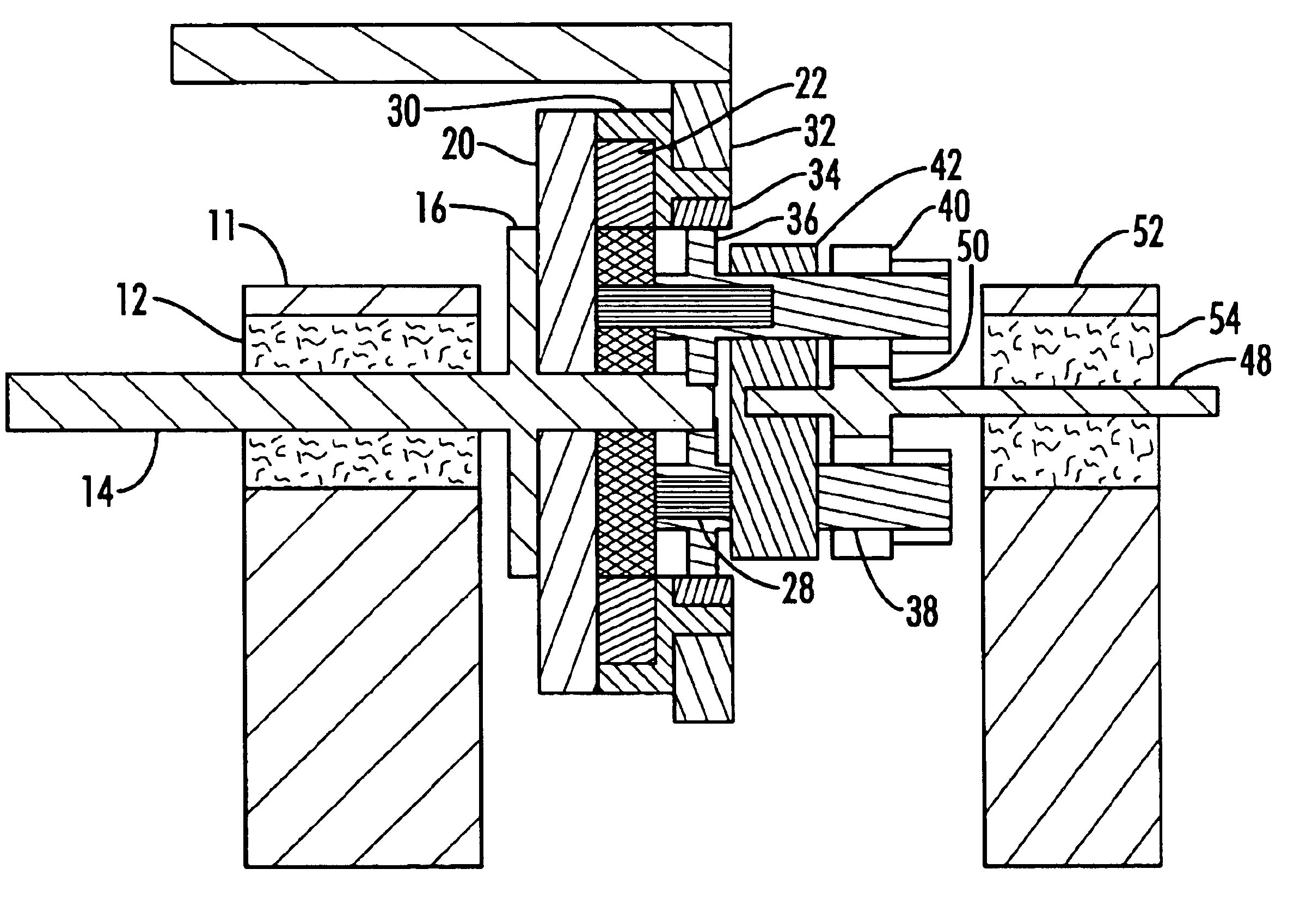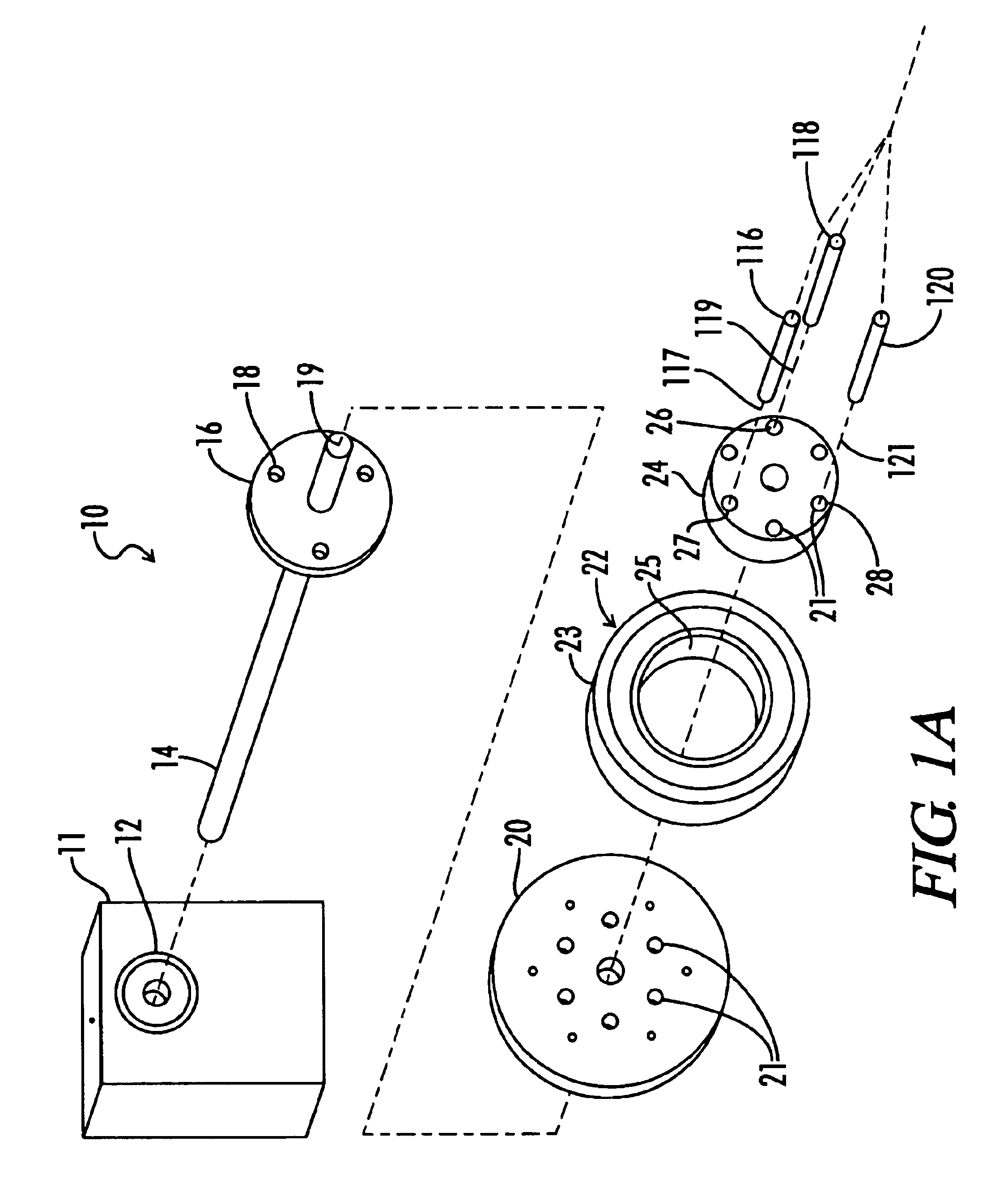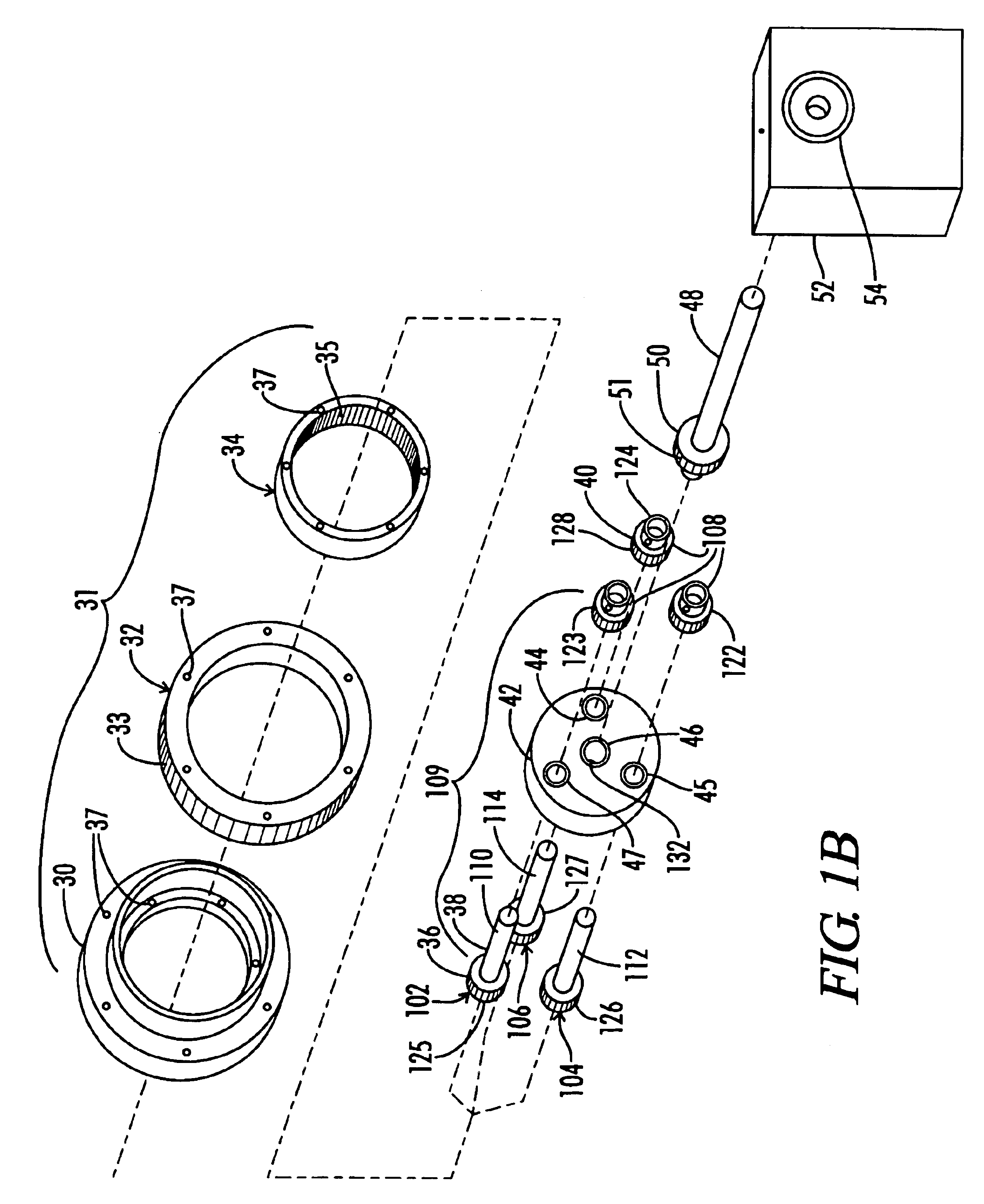Gear driven power converter
- Summary
- Abstract
- Description
- Claims
- Application Information
AI Technical Summary
Benefits of technology
Problems solved by technology
Method used
Image
Examples
Embodiment Construction
[0019]FIG. 4 of the drawings shows an overview of the placement of the power coupling 10 of the present invention in a power transfer apparatus 401, also known as a drive train 401, for a vehicle. The vehicle includes a rotational power supply 400 that is used to drive the vehicle, such as an internal combustion engine, electric motor, hydraulic drive, centrifugal generator or other method of generating rotational power. The present invention provides a drive train 401 from the rotating power supply 400 to the output 408. The drive train 401 begins with a variable speed transmission 402 adapted to convert the rotational power supply into a first power supply 404, also known as a first rotational power input operating at a first speed, and a second power supply 406, also known as a second rotational power input operating at a second speed. This type of variable speed transmission 402 is well known in the art and has many alternative designs. One of the speeds may simply be a pass thr...
PUM
 Login to View More
Login to View More Abstract
Description
Claims
Application Information
 Login to View More
Login to View More - R&D
- Intellectual Property
- Life Sciences
- Materials
- Tech Scout
- Unparalleled Data Quality
- Higher Quality Content
- 60% Fewer Hallucinations
Browse by: Latest US Patents, China's latest patents, Technical Efficacy Thesaurus, Application Domain, Technology Topic, Popular Technical Reports.
© 2025 PatSnap. All rights reserved.Legal|Privacy policy|Modern Slavery Act Transparency Statement|Sitemap|About US| Contact US: help@patsnap.com



